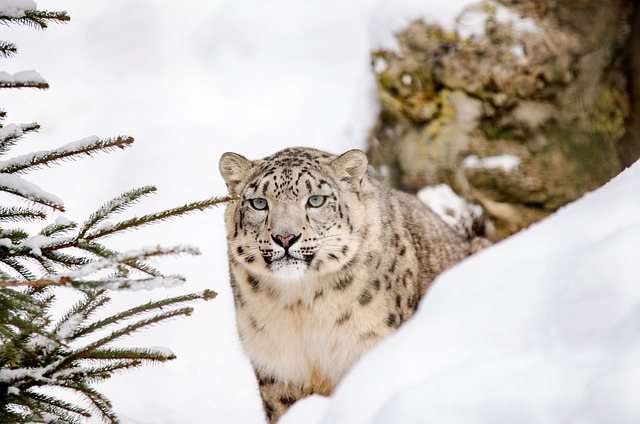– By Rupa Kumari
Kyrgyzstan has officially declared the snow leopard as its national symbol, underscoring its commitment to conservation and ecological balance.
A decree signed by President Sadyr Zhaparov of the Kyrgyz Republic, states: “The snow leopard is not only a symbol of natural wealth and cultural prosperity, but also an indicator of the stability and health of the mountain ecosystem, which occupies 1/3 of the global territory. The loss of snow leopards in the wild will lead to the risk of disturbing the fragile ecological balance, which will have a detrimental impact on various animal species and on humans.”
President Zhaparov also directed the Cabinet of Ministers to recognize the snow leopard as a national symbol, and protect its population and ecosystem. The Cabinet is tasked with developing a logo, exploring symbol usage at different levels, and defining its ideological content.
In ancient Kyrgyz culture, Panthera uncia, or the snow leopard, held significance as a totem animal linked to the legendary hero of the Kyrgyz people, Manas. Within Kyrgyz culture, the snow leopard symbolizes greatness, nobility, courage, bravery, and resilience.
Kyrgyzstan has taken a leading role in snow leopard conservation at the international level, hosting the inaugural Global Snow Leopard Forum in 2013 in the capital, Bishkek. During this event, the Bishkek Declaration on Snow Leopard Protection was unanimously adopted. Additionally, the Global Snow Leopard and Ecosystem Protection Programme (GSLEP) was initiated with the collaboration of representatives from 12 snow leopard range countries and the global environmental community to safeguard these majestic mountain cats.
Snow Leopard
Cloaked in a dense white-gray fur spotted with prominent black rosettes, snow leopards are inhabitants of high mountainous terrain. Often referred to as the ‘ghosts of the mountains,’ these elusive creatures effortlessly blend into their surroundings, becoming nearly indistinguishable in their natural habitat.
Known for their climbing prowess, snow leopards navigate steep slopes with ease due to their powerful build. Their hind legs grant them the ability to leap six times the length of their bodies, while a long tail provides agility, balance, and acts as protection against the cold, wrapping around the resting snow leopard.
The habitat of snow leopards spans the mountainous regions of 12 countries in Asia, including Afghanistan, Bhutan, China, India, Kazakhstan, Kyrgyz Republic, Mongolia, Nepal, Pakistan, Russia, Tajikistan, and Uzbekistan. According to the World Wildlife Organization, this extensive range covers approximately 772,204 square miles, with China hosting 60% of the habitat. Notably, over 70% of the snow leopard’s habitat remains unexplored.
Snow leopards hold ecological significance, serving as crucial top predators and indicators of the health of their high-altitude ecosystems. Moreover, they play an increasingly important role in gauging the impacts of climate change on mountain environments. The well-being of snow leopards is intertwined with that of numerous other species and the vast freshwater reservoirs of the planet.














